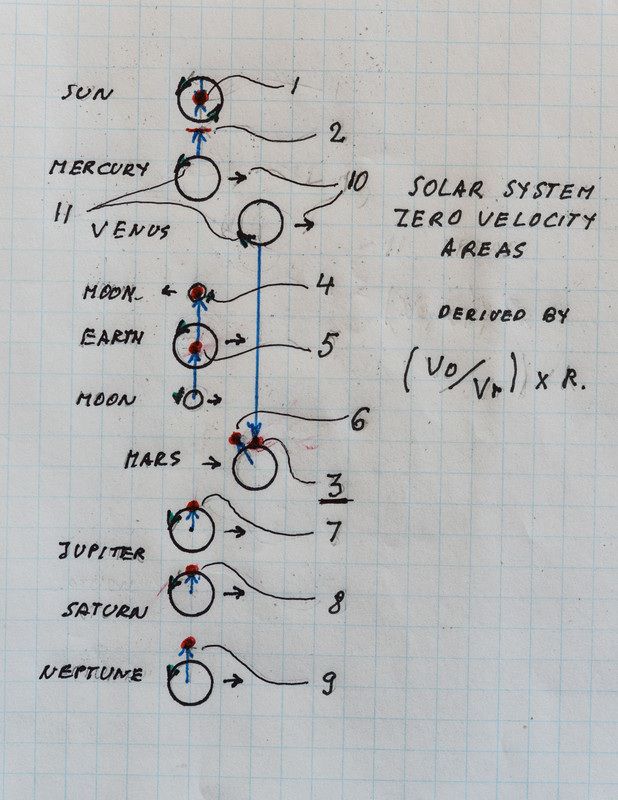But in this situation only points that are on that circle can every be said to have zero movement with respect to the surface, and that is when the planet is touching that point of the circle.
Yes, thank you Janus, but does that not mean that the the orbits of Saturn, Jupiter are imaginary near circles in space where some matter will always be stationary with the ecliptic plane? (actually very little matter, since most of the rest of those planets' mass rotate at different speeds than at the equator), and can not
imaginary lines like that be drawn, where zero velocity conditions would exist, if for a body, -- a) the radius and b) orbital velocity and c) the equatorial rotational velocity ratios were projected outwaedly, by the formula:
(RV km
/hr
: R km
) x OV km/hr
= Zero velocity circle R km
in the ecliptic field.
(note that this formula works
independent of the orbit size, but gives an orbit size. imaginary or not.
Here are 7 such areas so far:
1) Mercury inward, noon*, , ( points coinciding with an imaginary extension of the
~.3AU spacing of Earth -Venus -Mercury) aka bode,
2) Venus outward, midnight, (because of retrograde rotation),
Orbit of Mars ( yes, ~6000 km radius, extended to 228 millions.)
3) Earth inward, orbit of moon*. (if the moon were in a fixed position to the an equatorial point of the Earth, it would be stationary once a month with respect to the ecliptic when at high noon.)
4) Mars inward for it's moon Deimos ( situation as Moon.)
5) Jupiter, at equator noon*, coinciding with equator, near red spot
6) Saturn, at equator noon, , close to in line with rings.
7) Neptune in, coinciding with inner moons Thalassa, rings.
not tempted to attempt Uranus, Pluto or Solar system/ Milky way, because these are steeply inclined to their ecliptic planes.
It can not be a coincidence that significant features are found at the imaginary and real point lines in the ecliptic, where zero velocity conditions exist, or are projected to.
In case of moons, the periodic points ( monthly) can be identified on these imaginary orbital circles.
* only at
noon, midnight and the
equators are the
Orbital and
Rotational
Velocities adding and subtracting, cancelling
I can not find any other formula that would use
planetary size to link to orbital mechanics results. can you?

